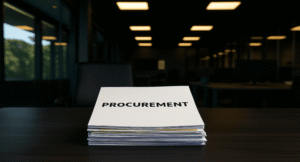In early October 2025, the European Commission presented a proposal for a new safeguard regime for steel imports into the European Union, which would replace the existing “safeguard” measures introduced in 2019 with stricter quotas and higher tariffs.
The new regime is expected to enter into force on July 1, 2026.
Objective of the New EU Measures
The main objective of the proposed measures is to protect the European steel industry from increasing imports at reduced prices and to preserve the strategic stability of supply chains.
The EU aims to prevent import dumping and ensure the competitiveness of domestic steel producers against third-country exporters.
Key Provisions of the New Steel Import Regime
According to the European Commission’s proposal:
-
The annual volume of steel that can be imported duty-free will be limited to 18.3 million tonnes, representing a significant reduction compared to the current system.
-
Any volume exceeding the allocated quota will be subject to a 50% import tariff, up from the current 25%.
-
Quotas will be distributed by product categories (CN/HS codes) and managed on a quarterly basis, with no possibility to carry over unused quotas into the next period.
-
The new system introduces a mandatory “melt & pour” rule, requiring identification of the country where the steel was melted and poured, in order to prevent circumvention and origin manipulation through third countries.
Geographic Scope of the Measures
The proposed EU steel safeguard measures would apply to most major steel-exporting countries, including China, Turkey, South Korea, and Vietnam.
Certain EEA countries, such as Norway, Iceland, and Liechtenstein, will be exempt from the new regime.
Western Balkan countries are not specifically mentioned in the proposal, which suggests that their exports to the EU will likely fall under the general rules of the new system.
Recommendations for Companies Importing or Exporting Steel to the EU
The new EU steel import protection regime brings significant changes for all companies involved in steel trade and production.
It is recommended that businesses:
-
Identify the tariff categories (CN/HS codes) of their products and monitor quota availability.
-
Include “tariff pass-through” clauses in contracts with EU partners to adjust for potential tariff or quota changes.
-
Prepare origin and production documentation in accordance with the “melt & pour” rule.
Timely preparation will help companies reduce costs, avoid delivery disruptions, and maintain competitiveness within the European market.
Conclusion: The EU Strengthens Protection of Its Steel Industry
The proposed European Union steel safeguard measures mark a clear shift toward a stronger industrial and trade protection policy.
This approach indicates a gradual transition toward sector-specific protection of domestic industries, with aluminum, the automotive sector, and the chemicals industry already being discussed as potential next candidates for similar measures.
For all stakeholders involved in steel supply chains, early analysis and contract adjustments will be crucial to avoid additional costs and business risks.
For more information about this topic, visit:Industry, production, and transport | IA Lawfirm





